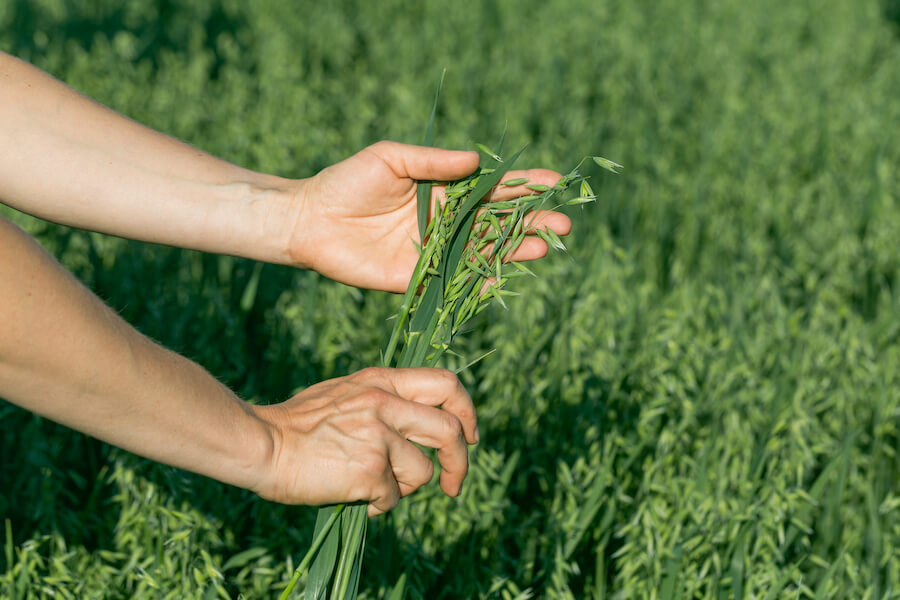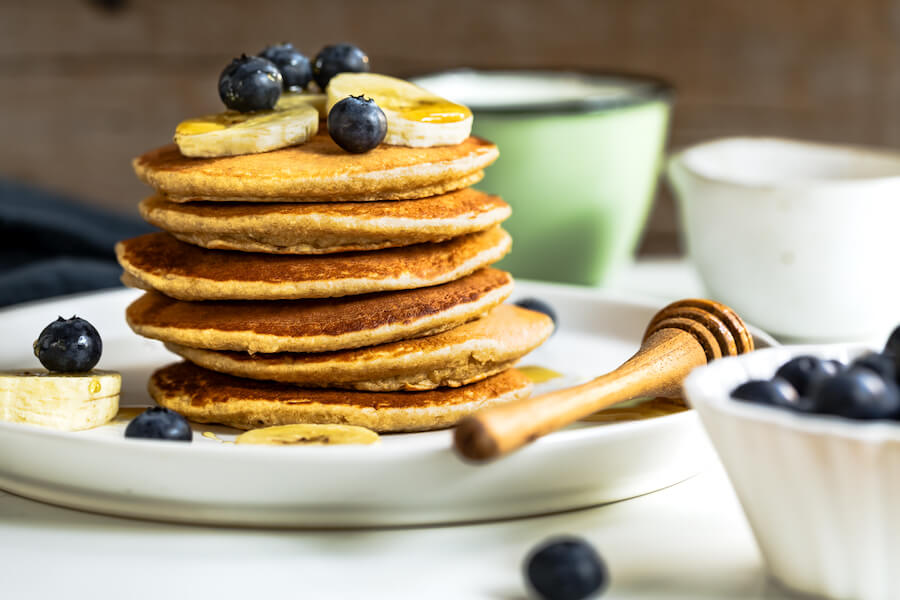In the vast world of flours, oat flour has made a significant mark, especially among health-conscious moms in the 30-45 age bracket. Its rise in popularity isn’t just a trend; it’s backed by numerous health benefits and a rich nutritional profile.
What is Oat Flour?
Oat flour is derived from whole oats ground into a powdery consistency. Unlike many flours that lose their nutritional essence during refining, oat flour retains its bran.
This retention ensures a high fiber content, which is beneficial for digestion. Historically, oats have been a dietary staple in various cultures. From being a reliable crop in ancient China due to its resilience against harsh weather to being a nutritious food source in medieval Europe, oats have stood the test of time. Today, oat flour isn’t just a culinary ingredient; it’s a symbol of wholesome nutrition.
Why Is Oat Flour So Popular?
Oat flour is popular due to its rich nutritional content, gluten-free nature, and versatility in baking. It offers sustained energy release and is packed with essential vitamins and minerals.
For a deeper dive into the basics of oat flour, check out this comprehensive guide on The Healthy Oat.

Oat Flour vs. Traditional Flour
Traditional flours, especially white flour, undergo a refining process that strips away many essential nutrients. In contrast, oat flour remains nutrient-rich. While baked goods made with oat flour might have a slightly different texture, they’re nutritionally superior.
Benefits:
- Gluten-Free: Ideal for those with gluten sensitivities.
- Heart Health: Oat flour contains beta-glucans, which can help lower bad cholesterol levels.
- Stable Blood Sugar: Its low glycemic index ensures stable blood sugar levels, making it suitable for diabetics.
Weaknesses:
- Texture: Baked goods might be softer or crumblier.
- Taste: A distinct taste that might take some getting used to.

Oat Flour vs. Other Flour Alternatives
In the realm of health-conscious baking, oat flour competes with a variety of alternative flours. Each flour has its unique characteristics, making them suitable for specific culinary applications.
What are the benefits of oat flour over other flour alternatives?
Oat flour stands out for its balanced nutritional profile, adaptability, and affordability. It’s high in fiber, protein, and essential vitamins, making it a versatile choice for both sweet and savory dishes.
Here’s a detailed comparison:
- Almond Flour:
- Description: Derived from ground almonds, this flour is naturally gluten-free.
- Nutritional Highlights: Low in carbs and high in protein. It’s also rich in vitamin E and magnesium.
- Best Used For: Paleo recipes, grain-free baking, and dense baked goods like brownies and pancakes. Its nutty flavor complements fruit-based desserts and savory dishes alike.
- Considerations: Almond flour is denser than oat flour and can make baked goods more moist. It’s also higher in calories and fat, so portion control is essential.
- Coconut Flour:
- Description: Made from dried coconut meat, it’s another gluten-free alternative.
- Nutritional Highlights: High in fiber, protein, and healthy fats. It’s also low in sugar and has a low glycemic index.
- Best Used For: Muffins, pancakes, and cookies. It’s also a popular thickening agent for sauces and gravies in paleo and keto recipes.
- Considerations: Coconut flour is highly absorbent, so recipes require more liquid. It also imparts a mild coconut flavor, which might not be suitable for all dishes.
- Quinoa Flour:
- Description: Ground from quinoa, a grain crop known for its edible seeds.
- Nutritional Highlights: Rich in protein, fiber, and various vitamins and minerals. It’s also gluten-free.
- Best Used For: Savory dishes, bread, and pizza crusts. Its earthy flavor complements savory recipes well.
- Considerations: Quinoa flour has a distinct taste that might not be for everyone. It can be an acquired taste in sweet dishes, so it’s often mixed with other flours to balance the flavor.
- Oat Flour:
- Description: Ground from whole oats, retaining most of its bran and nutrients.
- Nutritional Highlights: High in fiber, protein, and essential vitamins and minerals. It’s also gluten-free, making it suitable for those with sensitivities.
- Best Used For: Breads, muffins, pancakes, and a variety of baked goods. Its mild flavor makes it versatile for both sweet and savory dishes.
- Considerations: Baked goods might be softer or crumblier due to its texture. Adjustments in liquid might be required in recipes.
While each flour has its unique properties and nutritional benefits, oat flour stands out for its versatility, mild flavor, and affordability. When choosing a flour alternative, it’s essential to consider the desired texture, flavor, and nutritional profile of the final dish.
Deep Dive into Oat Flour’s Nutrition
A 30g serving of oat flour provides:
- Calories: 120
- Total Fat: 1.5g
- Carbohydrates: 22g
- Dietary Fiber: 4g – Essential for digestion and gives a feeling of fullness.
- Protein: 4g – Vital for muscle repair and growth.
- Vitamins: Rich in B-vitamins, which play a crucial role in energy production.
- Minerals: Contains magnesium (important for nerve and muscle function), phosphorus (essential for bone health), iron (crucial for transporting oxygen), and zinc (important for immunity).
Compared to other flours, oat flour’s higher fiber and protein content ensures a steady energy release, preventing energy slumps during the day.

How To Incorporate Oat Flour Into Your Diet
To incorporate oat flour, adjust the liquid in recipes as it absorbs more, combine it with other flours for structure, and embrace its unique texture in baked goods. It’s also ideal for breads, muffins, and pancakes.
Ready to see oat flour in action? These recipe videos will inspire you:
- Delightful Oat Flour Recipe: A family-friendly treat showcasing oat flour’s versatility.
- Weekend Brunch with Oat Flour: A brunch recipe that’s both delicious and nutritious.
- Traditional Dish with an Oat Flour Twist: Experience a classic dish reimagined with oat flour.
Switching to Oat Flour
- Liquid Adjustment: Oat flour absorbs more liquid. Adjust your recipes to achieve the right consistency.
- Combining Flours: For structured recipes like bread, mix oat flour with another flour to get the best results.
- Taste Test: Oat flour’s slightly sweet profile might require sugar adjustments in recipes.
- Texture: Embrace the unique texture of oat flour in baked goods. They might be softer but are packed with nutrition.
Final Thoughts
Oat flour is more than just a trend; it’s a testament to the fusion of health and taste. As moms prioritize their family’s health, oat flour stands out as a nutritious and delicious choice. So, the next time you bake, reach for oat flour and experience the wholesome difference.
Recent Posts
Oat milk is a versatile ingredient used in many different ways. Whether you're looking for a delicious way to improve your coffee or you're simply looking for a healthier milk option, oat milk will...

